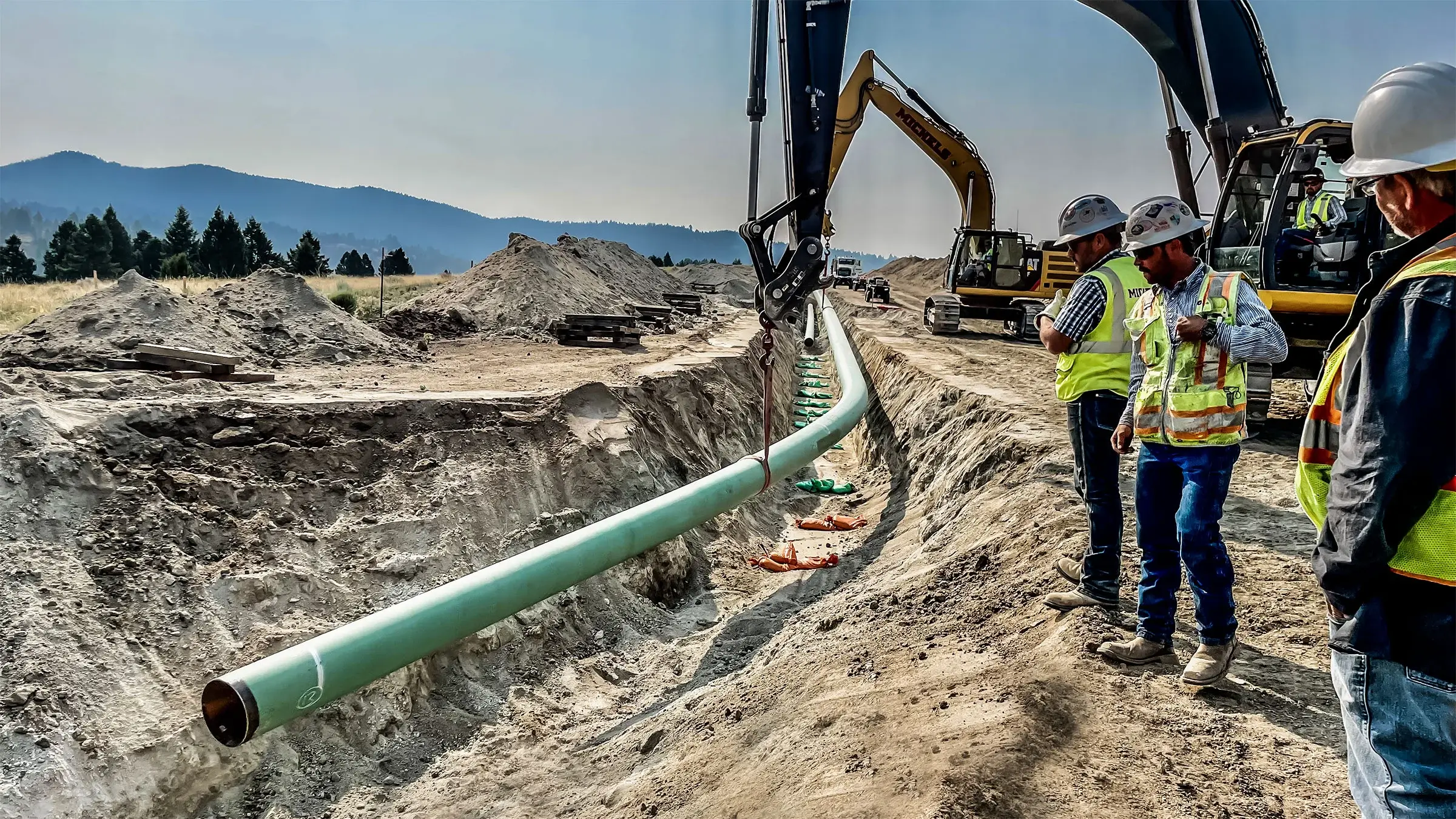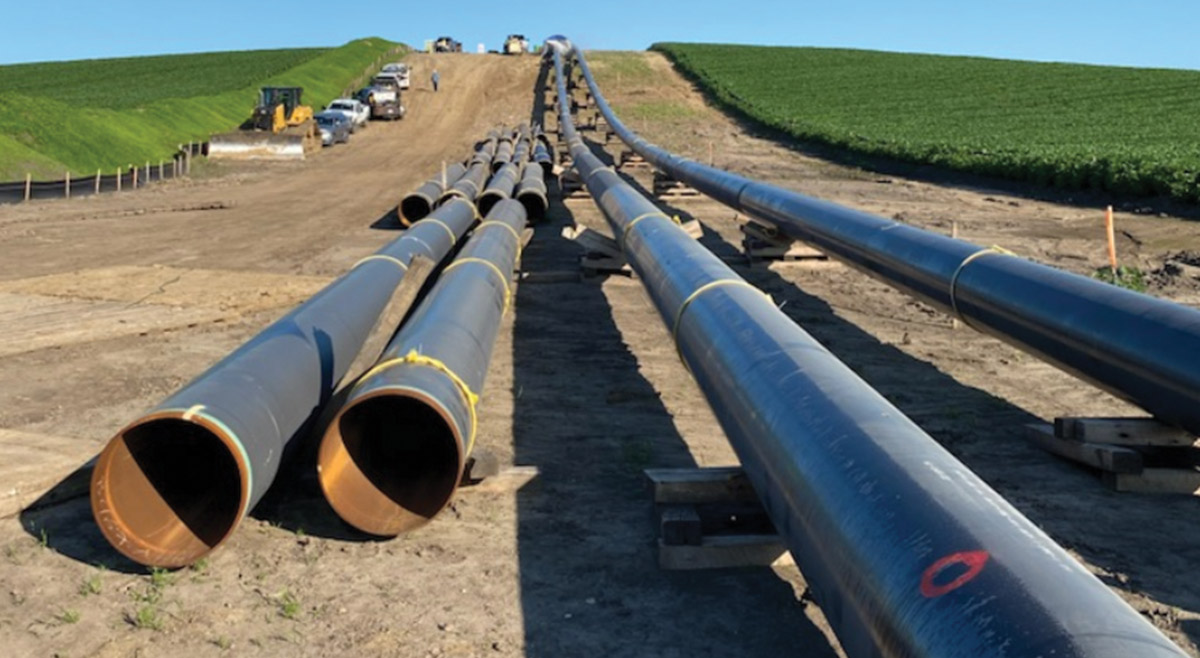How Pipeline Construction Services Improve Infrastructure Development Nationwide
Discovering the current Advancements in Pipeline Construction Providers for Modern Projects
The Pipeline Construction sector is going through considerable adjustments. Technologies such as clever materials and robotics are improving standard methods. These advancements promise to boost performance and security. Furthermore, AI modern technologies are improving project administration capabilities. As these components assemble, they raise questions about their lasting effect on sustainability and price. Recognizing these advancements is important for stakeholders looking to browse this evolving landscape. What ramifications do they hold for future projects?
The Increase of Smart Products in Pipeline Construction
As the need for a lot more sustainable and effective Pipeline systems increases, the assimilation of wise products has actually become a transformative remedy in Pipeline Construction. These advanced products possess unique residential or commercial properties that enhance the performance and longevity of pipelines. For example, self-healing polymers can automatically repair small leaks, greatly minimizing upkeep costs and downtime. Additionally, products installed with sensing units can keep track of structural honesty and environmental conditions, permitting real-time data collection and analysis.
In addition, smart products are corrosion-resistant and commonly light-weight, which not only simplifies setup however likewise prolongs the lifespan of the systems. Their adaptability makes it possible for pipelines to stand up to extreme ecological conditions, promoting safety and reliability. As industries increasingly prioritize sustainability, the usage of environment-friendly smart materials contributes to decreased ecological impact. Generally, the surge of wise products notes a significant shift in Pipeline Construction, paving the way for ingenious services to meet contemporary infrastructure requirements.
Improvements in Robotics for Setup and Upkeep
The integration of wise materials in Pipeline Construction is complemented by improvements in robotics, which are revolutionizing installment and upkeep processes. Robotic innovations, such as automated welding systems and drones, improve efficiency and accuracy, reducing human mistake and lessening security risks. These robotics can operate in difficult environments, guaranteeing that installations are performed in hazardous or remote locations without putting employees in danger.
Furthermore, robot evaluation tools outfitted with sophisticated sensing units provide real-time information on Pipeline honesty, enabling for proactive upkeep. They can discover leakages or structural weak points, enabling prompt interventions that expand the lifespan of Pipeline systems. Using robotics not only accelerates the Construction timeline but likewise maximizes resource appropriation, resulting in set you back financial savings. As these innovations proceed to develop, they are readied to play a critical duty in shaping the future of Pipeline Construction, making certain reliability and sustainability in framework growth.
AI-Driven Job Monitoring Devices Transforming Operations
AI-driven project management tools are reshaping process in Pipeline Construction by boosting decision-making procedures with improved access to real-time data analytics. These tools make it possible for teams to respond quickly to task advancements, therefore enhancing efficiency. In addition, streamlined communication networks foster collaboration among stakeholders, further enhancing task end results.
Boosted Decision-Making Procedures

Real-Time Information Analytics
Utilizing real-time data analytics, contemporary task management devices revolutionize workflow in Pipeline Construction. These advanced tools take advantage of expert system to offer instantaneous insights right into job performance, source allocation, and possible dangers. By constantly monitoring vital performance signs, groups can swiftly adapt to altering conditions, optimizing labor and products usage. The combination of real-time data enables more enlightened decision-making, lowering delays and reducing costs. In addition, anticipating analytics can recognize trends and forecast challenges prior to they intensify, boosting total job efficiency. Because of this, Pipeline Construction business that embrace these AI-driven tools can boost job timelines and outcomes, guaranteeing they continue to be competitive in an increasingly intricate market landscape. This technology marks a considerable shift towards data-centric monitoring techniques.
Streamlined Interaction Channels
Effective interaction is critical in Pipeline Construction, where countless stakeholders should work together perfectly to assure project success. The intro of AI-driven project management devices has transformed communication networks within the sector. These tools promote real-time details sharing, enabling groups to access updates, share records, and track development effectively. By automating regular tasks and offering a central platform for communication, these advancements eliminate misunderstandings and reduce hold-ups. Boosted visibility right into task timelines and source allowance cultivates responsibility among team participants. In addition, AI analytics can identify prospective interaction gaps, making sure proactive analytical. Eventually, streamlined communication networks not just improve workflow however likewise elevate general job efficiency, enabling Pipeline Construction companies to fulfill modern-day demands successfully.
Improved Safety Protocols Through Technology Integration
The integration of innovation in Pipeline Construction has caused improved security methods. Real-time tracking systems, wearable security gadgets, and automated danger analyses are now necessary parts in minimizing threats on job websites. These technologies not only improve worker safety and security yet likewise streamline compliance with sector laws.
Real-Time Surveillance Equipments
Just how can real-time monitoring systems transform Pipeline Construction security protocols? By integrating sophisticated technology, these systems give continual monitoring of Construction activities, ensuring prompt discovery of prospective hazards. Sensors and cams can check ecological problems, devices performance, and labor force movements, delivering vital information in actual time. This positive method allows task managers to recognize risks before they escalate, greatly improving precaution on-site. Furthermore, real-time tracking facilitates compliance with governing needs, ensuring that safety requirements are met regularly. The capability to analyze data instantaneously sustains informed decision-making, allowing prompt treatments. Because of this, Pipeline Construction tasks can operate a lot more successfully while guarding the wellness of employees and minimizing mishaps, thereby revolutionizing the market's safety and security landscape.
Wearable Safety Gadgets
Often, wearable safety gadgets are being incorporated right into Pipeline Construction to enhance safety procedures. These ingenious devices, including clever helmets, vests, and wristbands, are developed to check employee health and environmental problems in real-time. Outfitted with sensors, these tools can find risks such as hazardous gas direct exposure, extreme heat, or high noise levels, supplying instant signals to managers and workers. Furthermore, wearable modern technology typically includes GPS monitoring features, enabling reliable area surveillance of personnel on-site. This capability not only help in you can look here fast reaction during emergencies yet likewise improves general task administration. By prioritizing worker security with modern technology combination, Pipeline Construction companies are making substantial strides in lowering mishaps and promoting a society of security within the sector.

Automated Risk Assessments
While traditional risk assessments typically rely upon hand-operated analyses, the assimilation of automated danger evaluation technologies is changing security procedures in Pipeline Construction. These advanced systems leverage information analytics, expert system, and artificial intelligence to recognize potential threats more properly and successfully. By constantly monitoring ecological problems, equipment status, and worker habits, automated assessments give real-time understandings that boost decision-making. This proactive technique reduces the possibility of crashes and enhances conformity with safety guidelines. In addition, automated risk assessments can be updated quickly, ensuring that all stakeholders have accessibility to the most up to date info. Consequently, Pipeline Construction tasks gain from a more secure workplace, reducing disruptions and promoting a culture of safety and security with technology integration.
Lasting Practices in Pipeline Construction
As the need for energy framework climbs, the Pipeline Construction industry increasingly prioritizes sustainable practices that minimize ecological impact. Firms are adopting eco-friendly materials and innovative Construction techniques to lower their carbon footprint. The use of trenchless technology permits for Pipeline installation with very little disruption to the surrounding environment, decreasing and protecting all-natural environments soil disintegration.
Maintaining In addition, the implementation of renewable power sources, such as solar or wind, to power Construction activities is acquiring traction. This shift not only decreases reliance on fossil fuels however likewise boosts the overall sustainability of Pipeline projects. Additionally, reliable waste monitoring methods, including recycling and reusing materials, are ending up being criterion in the industry.
Real-Time Surveillance and Anticipating Maintenance Solutions
The shift towards sustainable methods in Pipeline Construction has led the way for the integration of real-time tracking and predictive maintenance solutions. These technologies utilize progressed sensing units and information analytics to continually analyze Pipeline stability and operational performance. By accumulating data in real time, operators can discover anomalies such as leakages or pressure drops prior to they rise right into significant problems. This proactive strategy not only lessens environmental threats however also decreases downtime and maintenance prices.
Predictive maintenance uses algorithms to anticipate potential failures based upon historical information and present performance metrics. This makes it possible for prompt interventions, optimizing maintenance routines and resource appropriation. Generally, real-time surveillance and anticipating maintenance options stand for a considerable improvement in Pipeline Construction, improving safety and security and dependability while sustaining sustainability goals. As sectors continue to welcome these technologies, the operational landscape of Pipeline monitoring is set to progress considerably, ensuring long-lasting stability and effectiveness.
The Role of Drones in Checking and Examination
Drones have arised as transformative tools in the checking and examination of pipelines, providing improved efficiency and accuracy. Their ability to catch high-resolution photos and video clips from numerous angles allows for complete assessments of Pipeline integrity without running the risk of human security. Outfitted with advanced sensors and thermal imaging capabilities, drones can discover leaks, rust, and structural abnormalities that might not be noticeable to the naked eye.
The release of drones greatly reduces examination time, making it possible check my site for quicker decision-making for maintenance and fixings. This efficiency converts to cost financial savings and very little disturbance to bordering environments. Drones can likewise access hard-to-reach areas, such as raised frameworks or tough surfaces, better increasing the extent of examinations.
As the Pipeline sector remains to accept technical improvements, the combination of drones into evaluating and evaluation processes is anticipated to grow, setting brand-new criteria for functional quality and security in Pipeline Construction solutions.
Regularly Asked Inquiries
What Are the Expenses Related To Modern Pipeline Construction Innovations?
The costs related to modern Pipeline Construction innovations often include innovative materials, specialized labor, and innovative innovation. These factors add to higher first financial investment, you can check here but can lead to long-lasting savings via enhanced performance and decreased maintenance requirements.
How Do Governing Changes Effect Pipeline Construction Technologies?
Regulatory adjustments significantly influence Pipeline Construction innovations by requiring the adoption of more secure, a lot more reliable techniques. Compliance needs often drive innovation, bring about improvements in materials, style, and Construction strategies that enhance general task sustainability and security.
What Abilities Are Required for Professions in Advanced Pipeline Construction?

Professions in innovative Pipeline Construction call for knowledge in engineering concepts, project administration, safety and security methods, and ecological regulations. In addition, skills in technology integration, teamwork, and analytical are essential for going across the intricacies of modern-day framework tasks.
Just How Can Firms Make Certain Conformity With Environmental Criteria?
To guarantee compliance with environmental requirements, business ought to execute rigorous training programs, conduct regular audits, and embrace ideal techniques in sustainability. Engaging with stakeholders and monitoring governing adjustments better reinforces their commitment to ecological stewardship.

What Are the Trick Challenges Encountering Pipeline Construction Today?
The essential obstacles encountering Pipeline Construction today include regulative conformity, ecological concerns, changing product costs, labor shortages, and the requirement for advanced modern technology combination (Pipeline Construction Services). These factors complicate job timelines and overall effectiveness in the market
As the need for extra lasting and reliable Pipeline systems raises, the assimilation of wise materials has actually arised as a transformative option in Pipeline Construction. AI-driven task administration devices are improving operations in Pipeline Construction by boosting decision-making procedures through enhanced accessibility to real-time information analytics. While job administration in Pipeline Construction has actually generally relied on hands-on procedures, the assimilation of innovative tools substantially boosts decision-making capacities. Using real-time data analytics, modern project management devices change operations in Pipeline Construction. Occupations in sophisticated Pipeline Construction need proficiency in engineering concepts, job management, safety and security protocols, and environmental laws.